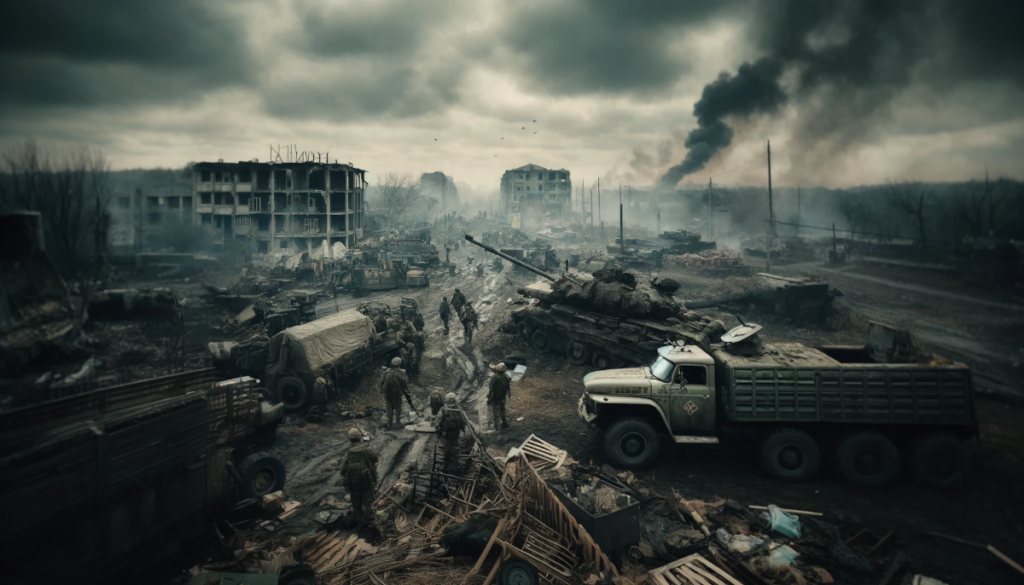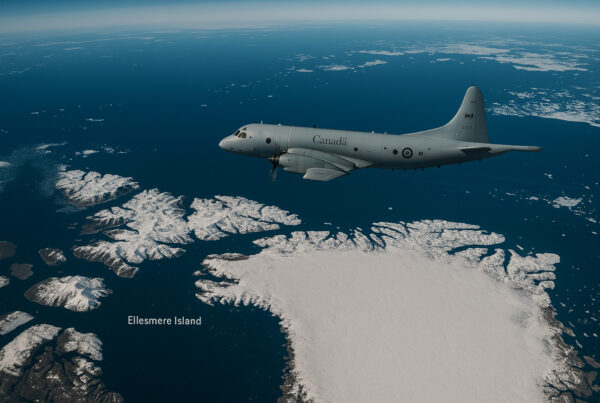 A battlefield in Eastern Europe (DALL-E)
A battlefield in Eastern Europe (DALL-E)
In a significant escalation of military posturing, Russia has announced the commencement of tactical nuclear drills. These exercises, ordered by President Vladimir Putin, come as a direct response to what the Kremlin describes as “provocative threats” from Western officials. This move underscores the heightened tensions between Russia and the West, particularly concerning the ongoing conflict in Ukraine.
Background and Objectives
The Russian Defense Ministry has outlined that these drills are designed to test the readiness of Russia’s non-strategic nuclear forces. The exercises will involve missile units from the Southern Military District, as well as aviation and naval forces. The stated goal is to enhance the operational preparedness of these units to carry out combat missions involving tactical nuclear weapons.
Tactical nuclear weapons, unlike strategic nuclear weapons, are intended for use on the battlefield and are designed to destroy specific military targets without causing widespread destruction. The drills will include simulations of various scenarios, from defensive postures to offensive operations. This comprehensive approach aims to ensure that Russia’s nuclear forces can respond effectively to any threat scenario.
The choice to hold these drills publicly marks a shift in Russian military strategy. Historically, such exercises have been conducted with minimal public disclosure. By announcing these drills, Russia is sending a clear message to the international community about its readiness to use its nuclear arsenal in defense of its interests.
Provocations and Reactions
The decision to hold these drills follows a series of statements and actions by Western leaders that Russia perceives as direct threats. French President Emmanuel Macron and British Foreign Secretary David Cameron have made remarks suggesting that Western troops might be deployed to Ukraine if the situation deteriorates further. These comments have been interpreted by the Kremlin as escalating the conflict, prompting a robust military response.
Kremlin spokesperson Dmitry Peskov has linked the drills to these “unprecedented” Western threats, emphasizing that the exercises are a necessary measure to safeguard Russia’s territorial integrity and sovereignty. This rhetoric is consistent with Russia’s previous stance of leveraging its nuclear capabilities as a deterrent against what it sees as Western aggression.
The drills also serve a domestic purpose, reinforcing President Putin’s image as a strong leader capable of defending Russia against external threats. This is particularly important in the context of the ongoing conflict in Ukraine, where Russian forces have faced significant challenges.
International Implications
The announcement of these drills has sparked concerns among NATO allies and other international observers. The use of tactical nuclear weapons, even in a simulated exercise, raises the stakes in the ongoing geopolitical standoff. The drills come at a time when the West is increasing its military support for Ukraine, including the provision of advanced weaponry and financial aid.
European leaders, including European Commission President Ursula von der Leyen, have urged China to use its influence to de-escalate the situation. The EU’s stance reflects a broader concern about the potential for the conflict to expand beyond Ukraine, with significant implications for global security. The prospect of Russia employing tactical nuclear weapons, even in a drill, exacerbates these concerns, highlighting the potential for miscalculations that could lead to catastrophic consequences.
Additionally, these drills have prompted a renewed discussion within NATO about the need to enhance its own nuclear deterrence capabilities. Some member states are calling for increased investments in missile defense systems and a re-evaluation of NATO’s nuclear posture.
Russia’s tactical nuclear drills represent a dramatic show of force aimed at reinforcing its strategic deterrent posture in the face of perceived Western provocations. As these exercises unfold, the international community watches closely, hoping to avoid further escalation in a region already fraught with tension and conflict.
The ongoing drills highlight the delicate balance of power in the region and the critical importance of diplomatic efforts to prevent a further escalation of hostilities. The potential for missteps or misinterpretations in such high-stakes scenarios underscores the need for open lines of communication between Russia and Western powers.








